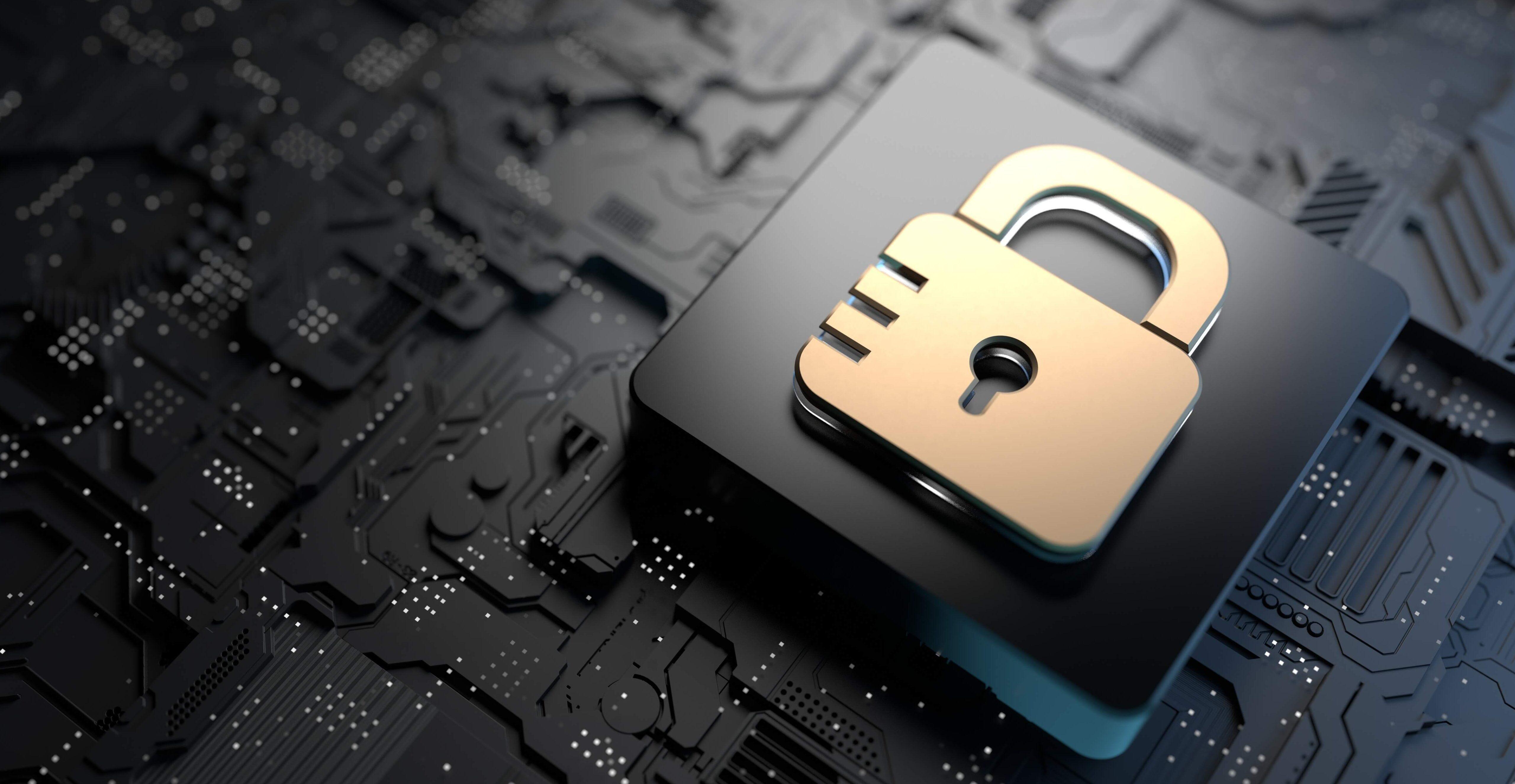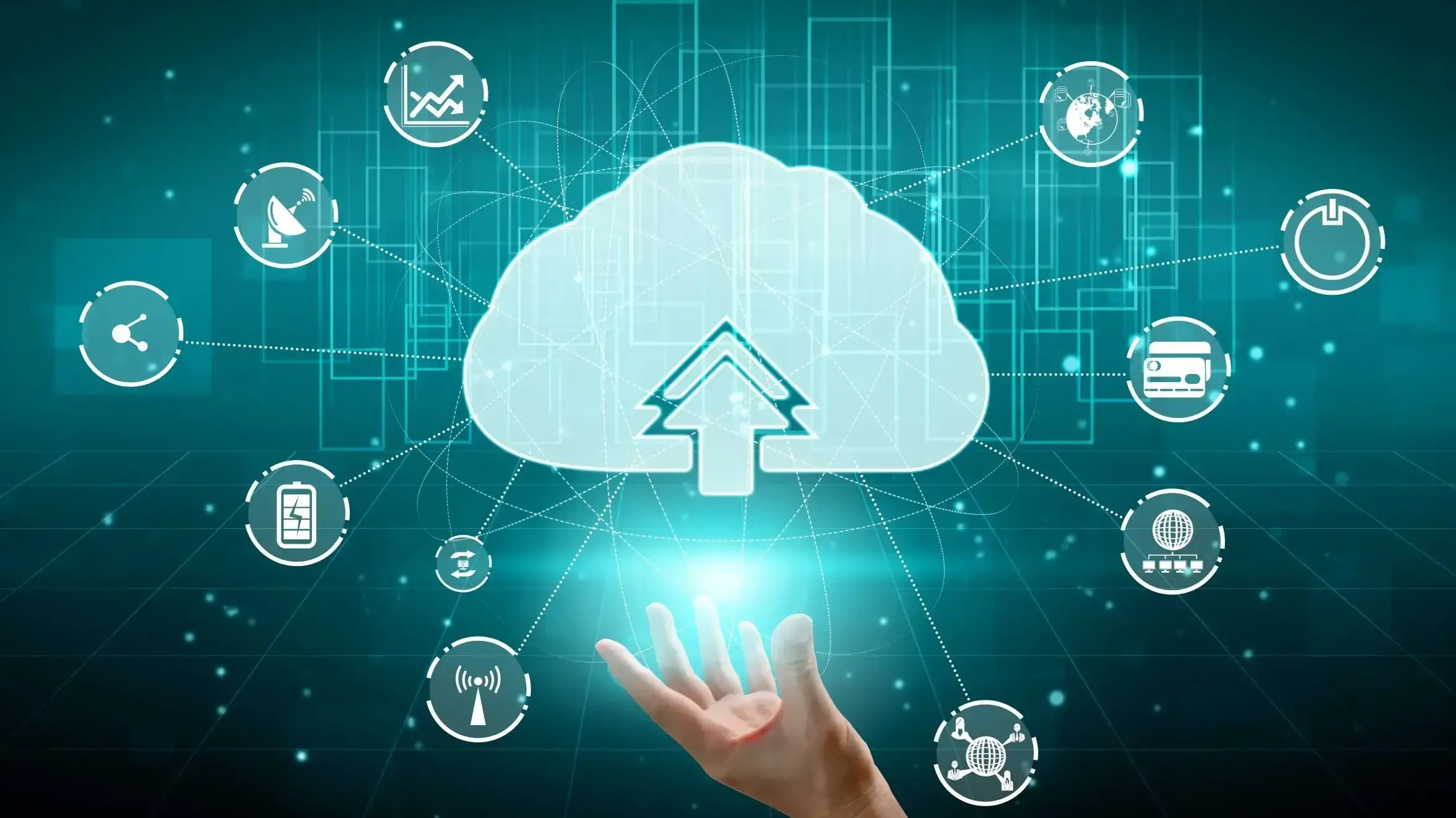Businesses that want to increase their business processes, increase data storage, or improve cyber security are debating the difference between having in-house servers and cloud computing servers. They're asking questions about security, scalability, ownership, and the public and hidden costs.
When it comes to comparing in-house servers and cloud computing, there's no real comparison. Having in-house servers may have been in vogue 10 or 15 years ago, but now, everything happens on the cloud anyway.
To make the comparison, let's look at the basic difference between in-house servers and cloud computing.
In-house servers are literally just that: Servers stored in your office. In the early 2000s, this might have been a single tower computer stored under someone's desk, and it would have housed your website and served as a central repository for proprietary information, like financial and customer data, or schematics, plans, and original research.
As you grew, you might have a small computer room to store a blade server rack — thin components about five centimeters high — with several servers installed on a single rack.
Cloud computers are exactly like that, but you're not responsible for the hardware at all. In fact, you'll never see these servers. They'll live elsewhere with the cloud servers provider, in a dedicated computer center that no one is allowed to enter. They're in massive buildings, in different parts of the world, and their locations are largely unknown.
Here are eight reasons why you need cloud computing for your business computing needs.
1. The Staffing Costs

With in-house computing, you need IT specialists to manage your servers, keep them running, and upgrade them when the time comes. They're the ones you call when things break, when servers go down, when something crashes, and when you need to add new software.
Their salaries are often over $100,000, and you need more of them as your server setup grows. The bigger the company, the more engineers you need to hire. Except it's difficult to find good networking engineers and technicians, which means salaries will likely go up even further. And you'll take weeks, if not months, to hire one, let alone several.
With cloud computing, the staffing headaches belong to the cloud services provider. They also have full-time people managing dozens, if not hundreds, of clients, which means you're not paying several full-time salaries yourself.
With cloud computing, you can hire one network administrator to manage your actual network and keeping your business software running, and the cloud provider will manage the team that keeps your hardware running.
2. The Hardware Costs
For in-house servers, a low-end blade server costs $2,000 and includes hardware, labor, and software installation. But those blades can reach $85,000 or more if you need large, high capacity servers. If you need several of them, you could reach nearly $1 million in total costs.
That doesn't include the real estate costs. For an in-house server setup, you need a dedicated server room with special ventilation and cooling equipment, as well as security features to prevent unauthorized access. That means it's difficult to expand into new spaces without a lot of renovation and remodeling.
And if you're operating in a limited physical space, growing your server room means expanding into a neighboring space, crowding staff members together, moving some of them to a new location, or just moving your entire operation. All that just so you can have a larger server room.
Finally, you'll need to upgrade your servers every few years to keep up with the improvements in processing speed and memory. Not to mention that blade servers wear out after a few years, which means replacing them before they break down.
Managed cloud server costs start at $79/month.
3. Energy Costs
Blade servers generate a lot of heat, and it can actually damage the hardware. So you have to have special ventilation and cooling equipment available to keep the room temperature at an optimal level. That adds a significant amount to your total energy bill.
Plus you have to keep the servers running at all costs, which for some operations, means having a generator that will kick on in the case of a power outage. Not only are the servers on and running 24/7, but if the power ever goes out, your generators will kick on immediately. A snowstorm, tornado, or hurricane can knock out your power grid for a few days. And while your staff can work remotely, they still need access to your servers — which are now inaccessible, thanks to the power outage.
Most large-scale operations have generator backups and contracts with fuel companies to fuel up the generators. Depending on how long your power outage lasts, that could reach thousands of dollars.
But with a cloud services provider, you're not paying those energy costs. And if the power goes out, they have the backups and failsafes already in place. It also means if the power goes out at your location, your servers are still up and running because they're located somewhere else.
4. Time Savings

Cloud-computing means you're operating one installation of your different business software solutions. Whether it's enterprise resource planning, CRM, financial management, or core human resources functions, most of these software packages are cloud-based to begin with. Productivity software like Google Workspace, Google Drive, or Microsoft Office 365 are examples of cloud-based software.
These are browser-based applications that anyone can use from any browser, any operating system, any device. There's no need for IT to install software applications to a person's computer — they just create a single login and they have access to a full suite of applications.
No more installing copies of software on individuals' computers, going from computer to computer with CDs to make sure everyone has the latest software installed. (Don't forget installing driver updates!) When there's an upgrade to make to your cloud-based software, it's one upgrade that is immediately available to everybody.
5. Total Cost of Ownership
With these four added costs — staffing, software, energy, and time — you have to look at the total cost of ownership for hosting your in-house servers versus cloud computing.
Your total cost of ownership could be tens of thousands of dollars each month for the "convenience" of keeping servers in your own building. And that's if you only have one standard setup that never changes. But if you need to grow or expand, you could be looking at thousands more dollars.
But a cloud-based operation could cost anywhere from a few hundred dollars to a few thousand per month. You don't pay for servers, you don't pay for upgrades, you don't pay for physical space, and you don't pay for electricity and AC. You have the salary of one network administrator, and the cloud company provides all those other services. And because they're working with thousands of clients, your share of those services is a few dollars per month.
6. Scalability and Growth
Occasionally, organizations need to increase their business computing power, but only for a short while. Maybe they have to run data analysis once a week or once a month. Or maybe they only need to run it once a quarter.
An in-house operation will need to plan around peak usage and make sure they have purchased the requisite number of servers and hired the number of staff year-round just for those peaks. We've already talked about the total cost of ownership, so imagine incurring all those costs just so you can occasionally access that peak power.
With a cloud-based system, you can "rent" increased capacity for a few days or even a few hours. That increase can cost pennies or even a few dollars per day, not tens of thousands of dollars. You can expand your processing power in just a few minutes, and turn it off again when you're finished, which means you only need to pay for what you use.
If you need to permanently increase your capacity, you only have to complete the request online. There's no need to buy and install more servers or hire more personnel. Just purchase more processing power from your cloud provider, install your software, and you're all set.
The is also true with more storage capacity: Request more disk space for your backups and disaster recovery operations with the click of a mouse and pay a few more dollars, not thousands more.
7. Cybersecurity

Cloud computing servers are more secure than in-house computers. Without question.
That's because the major cloud computing providers have state of the art security that uses artificial intelligence and machine learning to protect itself. The software in those operations learn from the unsuccessful attacks. The more attacks the system receives, the smarter it gets. The AI learns how to repel a cyberattack, so the attacker changes their method, and the AI learns how to repel that, and on and on and on. The more attacks, the better the security system is.
The problem is, this software is extremely expensive — something only the biggest corporations can really afford. Even if you could afford it for your servers, they would only receive hundreds of attacks per month, not millions. Which means your AI wouldn't have a fraction of the knowledge that the large systems have. And since most security software isn't as powerful as cloud security software, you're already more vulnerable just by having an in-house operation.
However, many executives feel better about having their servers in-house. That makes sense. It feels more secure, like you can keep an eye on everything. Except, they're only physically secure. If you have excellent building security, no one can easily reach the servers.
Except that doesn't matter. Because the real problems are the hackers and cybercriminals who try to break into your system, and they're halfway around the world. To them, it doesn't matter if your servers are in your building or in a server warehouse stored in a secret location.
Because, to a hacker, everything is the cloud. Google is the cloud, Amazon Web Services (AWS) is the cloud, your home computer connected to the Internet is the cloud, and your servers in your in-house server room is the cloud.
Keeping your servers in your building doesn't make them safer. If anything, they're less safe. If you want the best security for your proprietary data, financial data, and customer information, cloud storage is going to be your safest, most secure option.
8. Disaster Recovery & Co-Location
Disaster recovery means more than just recovering from physical damage — floods, tornadoes, storms, fire, or theft. It also includes cyber attacks and ransomware. Data breaches include loss of proprietary information, customers' private data, credit card numbers, or a ransomware attack that blocks you out from all of that information.
In 2018, the city of Atlanta's government systems were hit with a ransomware attack. People couldn't pay their bills, the police had to fill out forms by hand, and the courts could not accept ticket payments or fines. The city paid $2.6 million USD to recover from the attack, but no one knows if they paid the $52,000 USD ransom.
Cloud computing can help prevent ransomware attacks, because cloud systems are more secure than local networks. Meaning, if Atlanta had worked with a cloud-based computer operation, they would have had backup options available and wouldn't have been locked out of their data.
That's because most disaster recovery operations call for co-location, which means the cloud servers — and their secondary backup — are located well away from the original client. So, in Atlanta, they could have had their primary servers in Utah, but the secondary servers in Virginia and they would might not have lost any data to the ransomware attack. (Not to mention that the system could have repelled the attack in the first place.)
Plus, if the city government had been without their computers during the attack, staff members could have worked from home or remote locations and still accessed their necessary information.
Final Thoughts
When trying to understand the difference between in-house servers and cloud-computing operations, cloud computing has the advantage in almost every category. From cyber security to scalability to cost of operation, cloud computing has the clear advantage.
To learn more about how cloud computing can help your organization, please contact us for a free demonstration from one of our cloud computing experts.
Frequently Asked Questions
How much does web hosting cost?
Comparing prices is usually simple in other industries. However, when it comes to web hosting, it can be quite confusing since when you’re comparing the prices, you need to consider all of the features that the plans offer and compare them as well. The cost of web hosting varies depending on the plan you get and the web hosting provider you get it from, so make sure that you have a good understanding of the structure of pricing.
Why should I try a managed cloud server?
We’d highly recommend using a managed service, especially if you don’t have the technical skills to run a website. It might cost a little extra, but it certainly takes the stress out of site management.
How easily can I switch between VPS and cloud hosting?
Generally, there shouldn’t be an issue when switching. However, if you’ve done a lot of heavy customization to your VPS solution you might find making the switch a little more time-consuming.
How many websites can I host in the cloud?
Our cloud hosting packages allow up to 10 websites to be hosted simultaneously.

Erik Deckers has been a professional blogger since 2009. He is the co-author of Branding Yourself, No Bullshit Social Media, and The Owned Media Doctrine. He published his first humor novel, Mackinac Island Nation, in 2019. Erik has been blogging since 1997, and a newspaper humor columnist since 1994. He has written several radio and stage plays, and numerous business articles. Erik was the Spring 2016 writer-in-residence at the Jack Kerouac House in Orlando, FL, and now serves on their board of directors.
View all posts by Erik Deckers





















